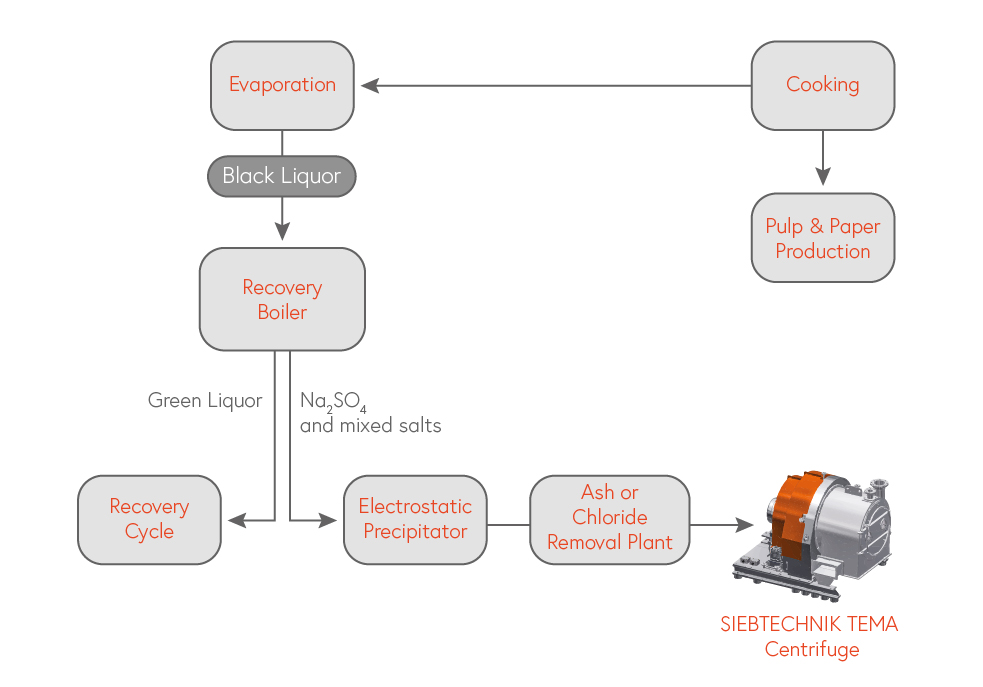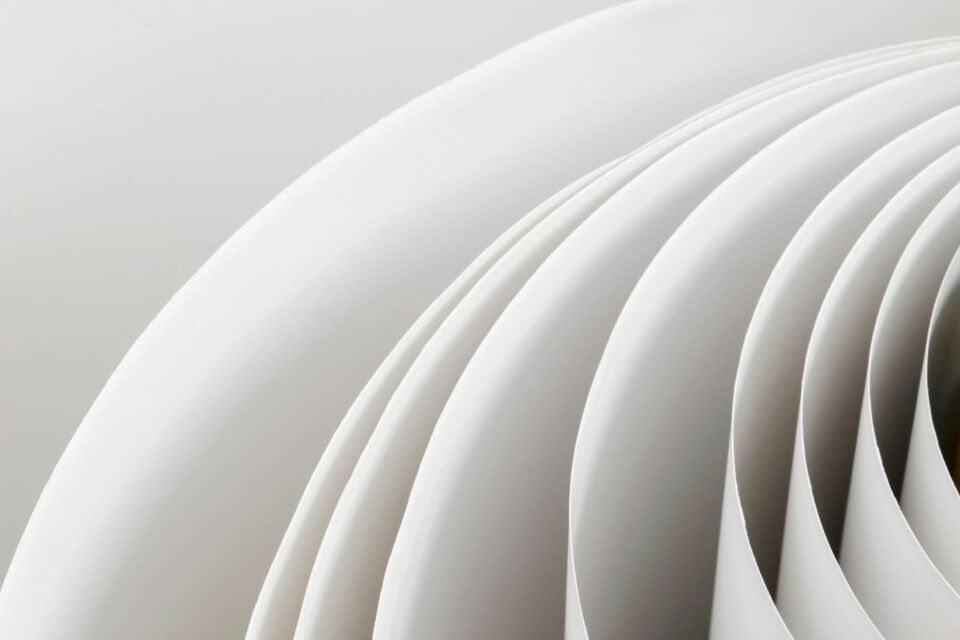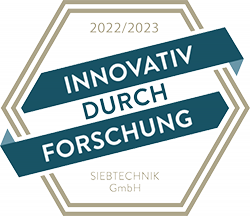Screen scroll centrifuge CONTURBEX
The CONTURBEX is a continuously operating, filtering centrifuge with a very wide range of applications.
The pulp and paper industry is a major industry that produces paper and paper products from natural resources such as wood fiber. This industry plays a central role in our daily lives, providing the basis for a wide range of products, from newspapers to packaging and hygiene products.
The production of paper requires complex manufacturing processes that take into account both technological innovation and environmental concerns. In this context, the industry is also focusing on sustainability efforts and the responsible use of resources.
First, wood raw materials, such as logs or chips of various wood species, are collected and prepared. The wood is chopped into fibers to expose its cellulose structure. The wood fibers are placed in large pressure vessels called digesters. The actual production process takes place in these digesters.
The fibers are cooked in a mixture of water, caustic soda (NaOH), and sodium sulfide (Na₂S) at elevated temperatures and high pressures. This cooking process dissolves lignin, the natural binder in wood, and separates it from the cellulose fibers.
Black liquor is a byproduct of the pulp and paper industry that is generated during the production of pulp from wood fibers. It is a highly alkaline solution containing various chemical compounds such as lignin, inorganic salts, and other organic substances. Due to its high alkalinity and the impurities it contains, black liquor is harmful to the environment and requires careful treatment.
The papermaking process consists of four main parts. The first is the cooking process, which physically and chemically treats the wood. Second, cellulose and pulp production, and third, paper production in the paper machines. The remaining fourth part of this production is the black liquor treatment, a complex and costly process to reduce energy and environmental costs and make the entire paper production process economical.

Approximately seven tons of black liquor must be processed for each ton of pulp. It is concentrated to a higher dry mass in an evaporation process. The concentrated liquor is then injected into the recovery boiler where it is burned. This is the technical heart of black liquor processing, producing high-pressure steam that is fed to turbogenerators to reduce steam pressure for use in the mill and to generate electricity; it also recovers most of the valuable chemicals in several recovery stages.
During the incineration process, anhydrous sodium sulfate (Na₂SO₄) is reduced to sodium sulfide (Na₂S) by thermochemical reduction (Na₂SO₄ + 2C → Na₂S + 2CO₂).
The melt discharged at the bottom of the boiler is further recycled in recausticizing processes where sodium carbonate (Na₂CO₃), calcium carbonate (CaCO₃) and calcium oxide (CaO) are reacted to regenerate sodium hydroxide (NaOH).


Remaining mineral residues from the combustion process, called non-process elements (NPE), which contain sodium, chloride and potassium compounds (Na₂SO₄, Na₂CO₃, NaCl, K₂SO₄, K₂CO₃ und KCl) must be separated to prevent corrosion and can be recycled to the preceding processes. The life of the recovery boiler is also extended by preventing deposits on the heat exchangers, thus avoiding unplanned downtime.
Soot blowers are used to clean and collect the mineral deposits from the heat exchangers. Electrostatic precipitators (ESPs) collect volatile salts from the air downstream of the combustion section that can clog the gas path heat exchangers of the recovery boiler. These mineral-rich streams can be treated in separate facilities.
NPE recovery systems are either leaching or crystallization processes downstream of sootblowers and electrostatic precipitators to recover sodium carbonate (NaCO₃), chloride (Cl⁻) and potassium (K⁺) salts or to reduce their concentrations in the effluent stream.
Special ARC and CRP systems allow savings by recovering sodium carbonate (NaCO₃), anhydrous sodium sulfate (Na₂SO₄) or converting sulfates into saleable potassium sulfate (SOP oder K₂SO₄). SIEBTECHNIK TEMA pusher centrifuges or CONTURBEX centrifuges, usually made of high-alloy stainless steels, are used for the separation of 1000 kg/h to 30000 kg/h of NPE salts per machine, depending on the size of the recovery vessel.
SIEBTECHNIK TEMA centrifuges are specially optimized for the respective separation task. When selecting materials, austenitic and ferritic stainless steels have proven themselves in centrifuge construction for applications subject to normal stresses.
For processes in which abrasive materials are processed, the centrifuges must be provided with effective wear protection. Starting with hard coal processing, we have been continuously developing wear protection systems since 1922.
Our centrifuges can be equipped with highly developed wear protection systems made of e.g. tungsten carbide, Stellite® or ceramic tiles, to name but a few. Rubber coatings or matrix coatings have also proven themselves in various applications.
If required, our engineers develop new and efficient solutions in coating, bonding and joining technology for our customers worldwide.
Centrifuge components must not only withstand high forces, but also process-related stresses such as corrosion, wear and high temperatures. Cost and availability of materials also play an important role. Our customers select the necessary product-contacting materials according to these very specific requirements.
Duplex and high-alloy stainless steels, Hastelloy® and titanium materials for a wide variety of processes and stresses are part of our daily business in centrifuge construction. Our quality management has developed very detailed and cost effective processes for design, manufacturing processes and component testing based on European guidelines.
Typical sheet metal and forging materials for centrifuge wetted components include

The CONTURBEX is a continuously operating, filtering centrifuge with a very wide range of applications.

The SIEBTECHNIK TEMA SHS pusher centrifuge has established itself and proven itself as a modern high-performance unit in many industries.

Find the right contact for your region.
We have the right solution for every task. And if not, we’ll work with you to find one. Get in touch with us!
Our specialists will be happy to advise you individually on site or remotely, and are available to answer any questions you may have. Send us a message using our
